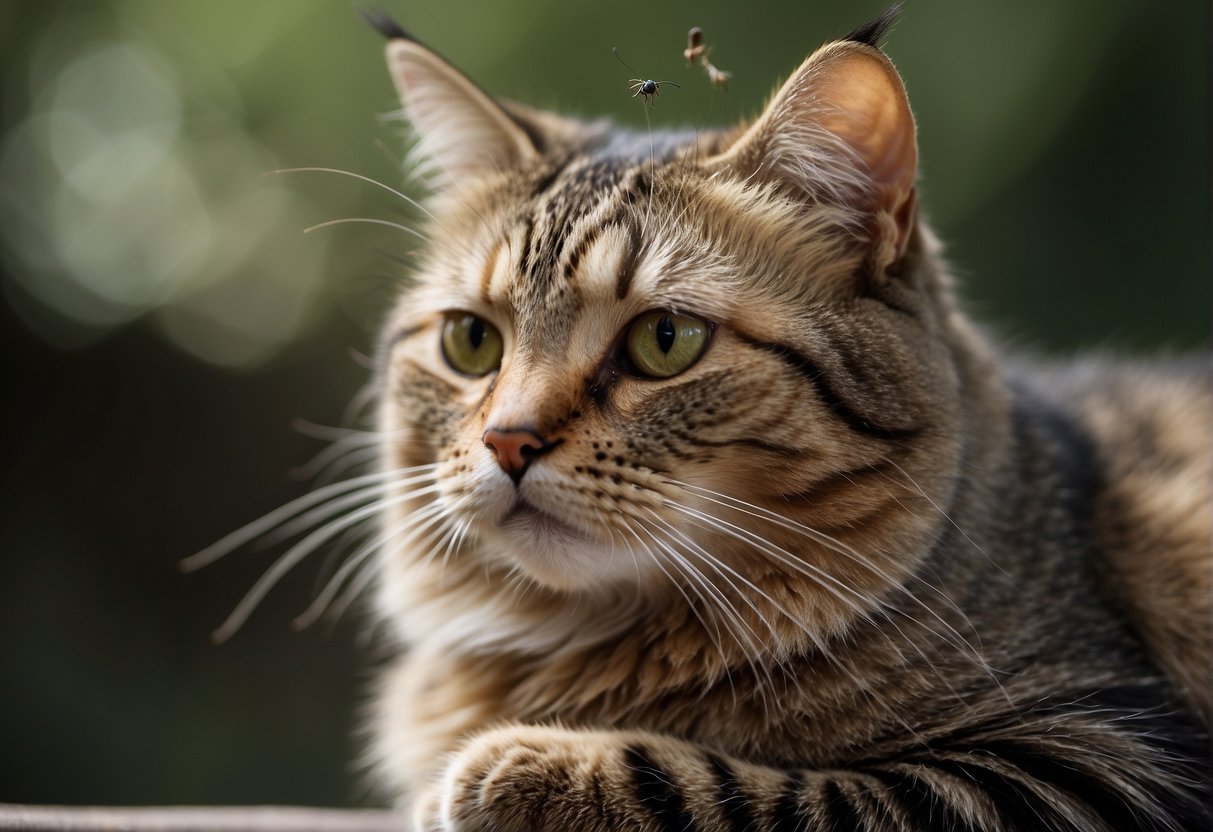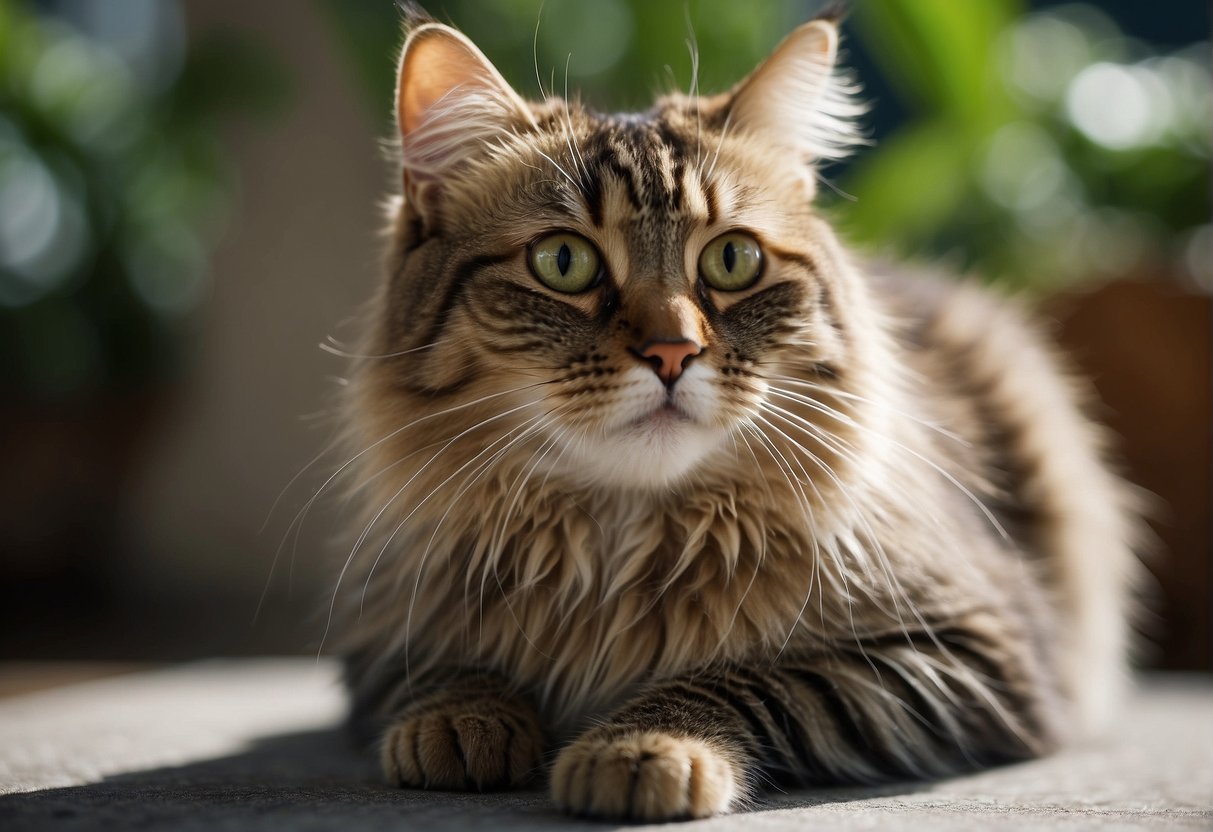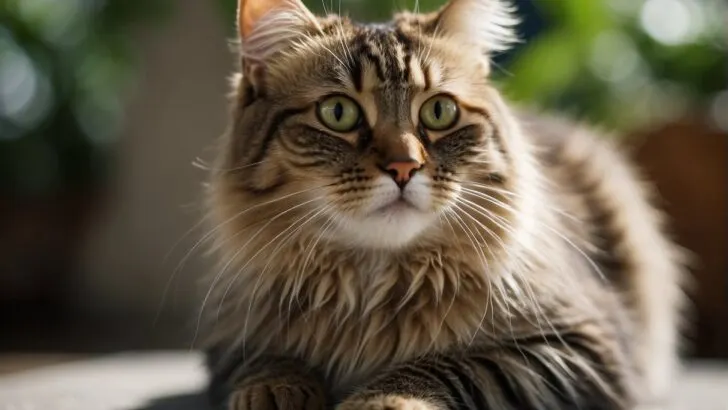Yes, your feline friend can indeed get lice, although it’s a relatively rare occurrence. These tiny parasites are species-specific and the type that might infest cats is different from those that might bug humans or dogs.
From personal experience, spotting lice on a cat often involves seeing small, light-colored specks moving around in the fur, especially if your cat is showing signs of skin irritation or excessive scratching.

If you notice your cat persistently grooming itself or appearing unsettled, it’s wise to check for lice. These critters are different from other more common parasites like fleas and ticks.
They are flightless insects that live their entire lifecycle on the host, relying on direct contact for spread, typically from mother to kitten or between cats in close proximity. You might see nits (lice eggs) attached to the hair shafts or the lice themselves crawling slowly compared to the jumpy nature of fleas.
Recognizing lice is the first step before you head to a vet who can confirm the diagnosis and suggest the appropriate treatment. Regular use of preventive products can be a game-changer in keeping your cat lice-free.
Feline Lice Infestations

In cats, lice infestations are not as common as other pests, but it’s crucial to recognize them swiftly because they can cause extreme discomfort.
Types of Lice in Cats
There’s a specific lice species that targets your feline companions called Felicola subrostratus. These tiny parasites are species-specific, meaning they don’t hop from dogs to cats or vice versa. So, if your cat has lice, it’s almost certain they’ve picked up this particular type.
Adult lice and their eggs, also known as nits, attach firmly to your cat’s hair. The nits are small, oval, and white, and can sometimes be mistaken for dandruff, while the adult lice can be seen moving.
- Adult Lice: Visible to the naked eye, they navigate through your cat’s fur.
- Nits (Eggs): Often found attached to hair shafts, resembling tiny specks of dandruff.
Life Cycle of Cat Lice
Understanding the life cycle of cat lice can be pivotal in effectively tackling an infestation. It begins with nits hatching into nymphs. These immature lice then grow through several stages before becoming adult lice, ready to continue the breeding cycle. Here’s a simple breakdown:
- Nits: Hatch in about a week.
- Nymphs: Mature into adults after a few weeks.
- Adult Lice: Can live for up to a month on your cat.
By knowing what lice and their eggs look like and understanding their life cycle, you’ll be better equipped to identify and address a lice problem in your cat.
Remember, these parasites are not a sign of a dirty home or neglected cat; they can happen to anyone. Regular grooming can help you spot an infestation early.
Signs and Diagnosis of Lice in Cats
When your cat starts showing unusual signs of discomfort, it might be more than just a bad day. Keep an eye out for persistent scratching or grooming—these could be indicators of lice infestation.
Common Symptoms
Your feline friend may not be able to tell you when something’s wrong, but their actions can. Look for:
- Scratching and Itching: Persistent scratching, especially around the head, neck, and ears.
- Chewing and Grooming: Increased chewing or grooming behavior can be a result of trying to relieve the itch.
- Hair Loss: Patchy spots or hair loss due to excessive scratching or grooming.
- Matted Fur: Fur may appear matted or have a dry appearance.
- Signs on Skin: Lice or nits (lice eggs) may be visible in the fur or on the skin as tiny specks.
Confirming the Diagnosis
Suspicion alone isn’t enough; you’ll want to confirm whether lice are the culprits. Here’s what to do:
- Visual Check: Part your cat’s fur and look closely for tiny, sesame seed-like insects or their nits. The nits will usually be near the skin, attached to the hair shaft.
- Microscopic Examination: A vet can take samples of your cat’s fur or skin scrapings and examine them under a microscope to identify lice or their eggs.
Treating Lice in Cats
When your cat gets lice, prompt treatment is essential to get rid of these parasites and relieve your cat’s discomfort. There are a variety of treatment options available including over-the-counter products, prescription medications, and thorough home care.
Over-the-Counter Products
Your first line of defense might be over-the-counter products which are readily available. Here are some specifics:
- Topical shampoos, sprays, and powders: These products are formulated to kill lice on contact. Look for shampoos containing pyrethrins or pyrethroids, which are insecticides that are generally safe for cats when used as directed.
- Spot-on treatments: Some products with fipronil can be effective against lice. They are easy to apply and can provide protection for up to a month per treatment.
Remember to read and follow label instructions carefully, as some products suitable for dogs can be toxic to cats.
Prescription Treatments
For more severe infestations or for peace of mind, you may prefer prescription treatments:
- Veterinarian-prescribed medications: These may include selamectin, which not only treats lice but can also prevent future infestations by targeting a range of parasites.
- Oral medications: In some cases, oral treatments may be recommended. Your vet will give you the best course of action.
Always consult your veterinarian before starting your cat on a new medication.
Home Care and Cleaning
Treating your cat for lice also involves cleaning their environment:
- Clean all bedding: Wash your cat’s bedding in hot water to kill any lice or eggs. This should be done regularly until you are certain the lice are gone.
- Vacuuming: Consistently vacuum areas where your cat spends a lot of time to remove any lice or nits from the surroundings.
- Avoid home remedies: While natural oils and homemade mixtures are popular, they are not reliably effective against lice and some can be harmful to your cat. Stick to proven treatments.
Regular grooming and inspection of your cat’s coat can help you catch lice early before they become a larger problem. If you stay vigilant and follow these treatments, your furry friend should be lice-free in no time.
Prevention and Control of Cat Lice
Keeping your feline friend lice-free not only means a happier cat but also a cleaner home. It’s all about regular care and maintaining a lice-hostile environment.
Environmental Management
Your home environment can be a haven for lice if not managed properly. Lice can spread through direct and indirect contact.
- Direct Contact: This mainly includes contact between an infested cat and others.
- Indirect Contact: Lice or their eggs (nits) can linger on grooming tools, furniture, brushes, and collars.
To control the spread:
- Wash all bedding and fabric your cat comes in contact with, using hot water.
- Regularly vacuum carpets and furniture.
- Disinfect grooming tools after each use.
Regular Grooming Practices
Grooming isn’t just about shine; it’s about health. Here’s where regular grooming can help:
- Brushing your cat with a fine-toothed comb regularly can help spot and remove lice.
- For long-haired breeds, more frequent grooming may be necessary to prevent matting, where lice can hide.
Proactive Measures
Prevention is the best form of control; here’s how to be proactive:
- Limit your cat’s exposure to potentially infested environments or animals.
- Employ preventive products recommended by veterinarians, like spot-on treatments.
- Keep new cats isolated until you’re sure they’re lice-free before introducing them to your other pets.

My name is James, and welcome to FAQCats!
Along with our team of cat owners, expert pet enthusiasts, and pet professionals, we aim to write engaging helpful, engaging content about cats. At FAQCats we strive to provide content that’s accurate and fun to read. Our team writes about everything related to cats; even the most complex of topics. Through extensive research and caring for our own fur-pals, we’re able to provide something cat owners worldwide will love. Have a look around, and leave us feedback anytime!

